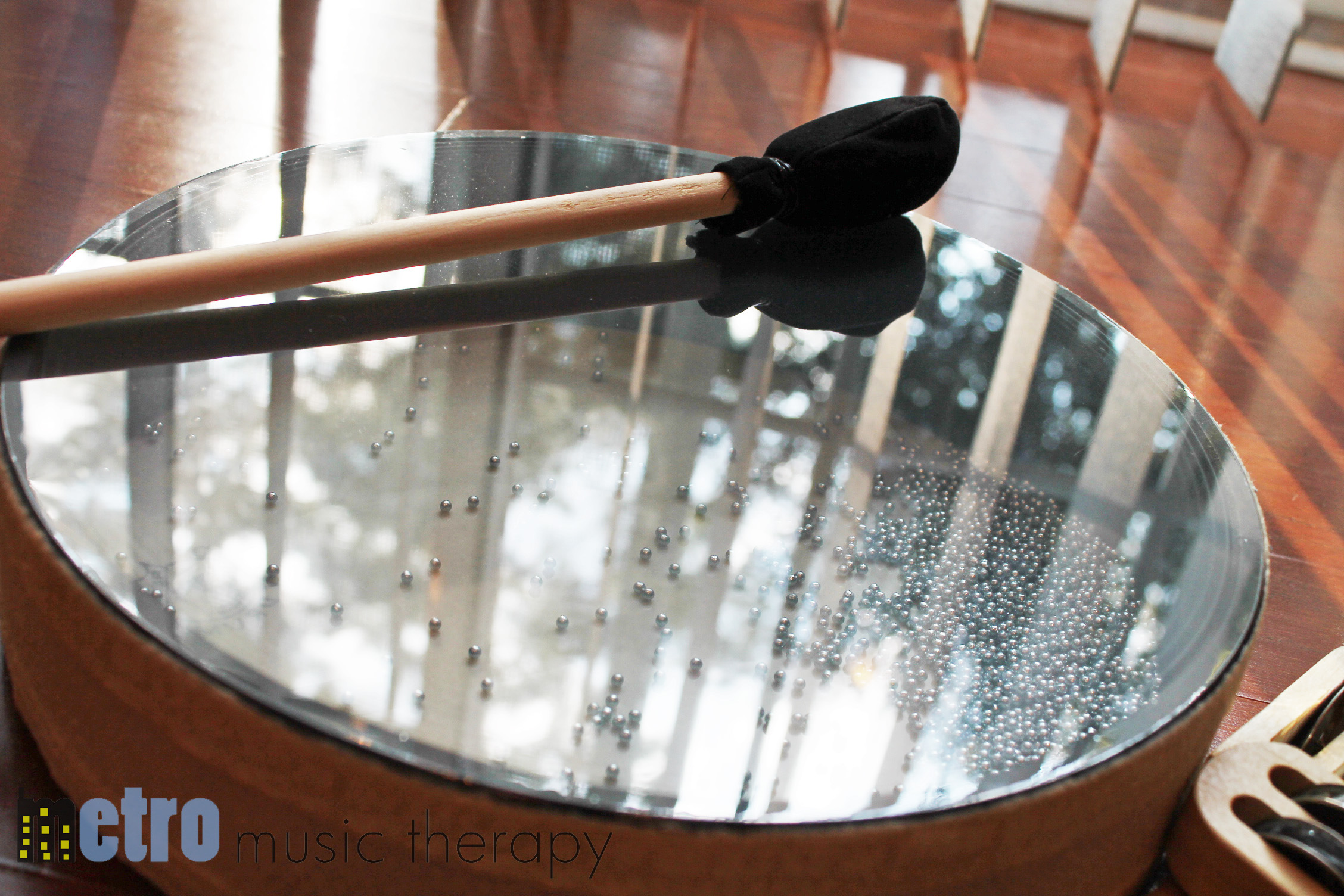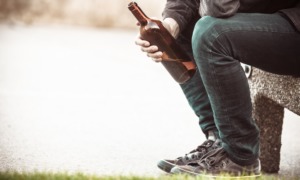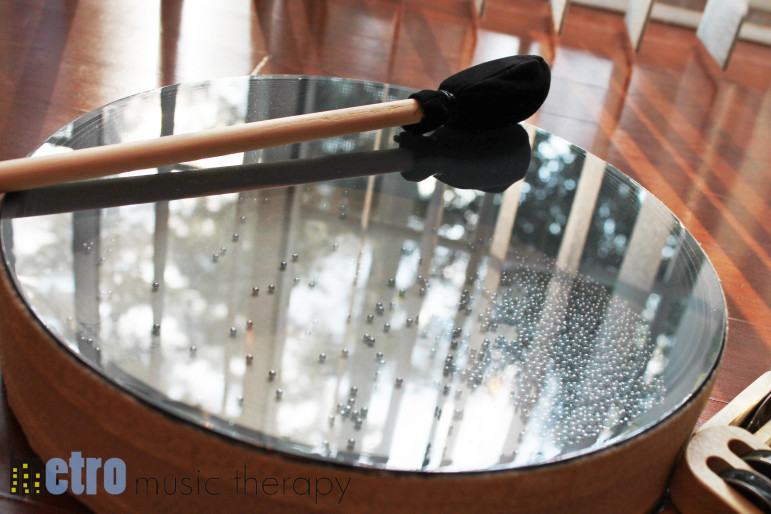
Photo courtesy of Metro Music Therapy
Beat. Pause. Beat, beat. Pause.
Beat, pause, beat.
Beat. Beat.
BEAT. BEAT. BEAT. Pause.
“It was almost as if you weren’t listening; it was like you were yelling at me.”
No, these aren’t the words of a frustrated parent or spouse, though they certainly could be. They’re part of the feedback Ellen Cool, board-certified music therapist, might give when she’s working with young students in recovery during a drum response exercise.
Standing face-to-face with a student, she’ll demonstrate a beat or a rhythm on the drums, then ask for a musical response from him or her to practice emotional expression and listening skills. If the student’s musical pattern, volume or rhythm doesn’t quite match what she’s demonstrated, it instantly creates an opportunity to have a conversation about communication skills — without really talking at all — which in turn leads to improved dialogue and interpersonal relationships over time.
[module type=”aside” align=”right”]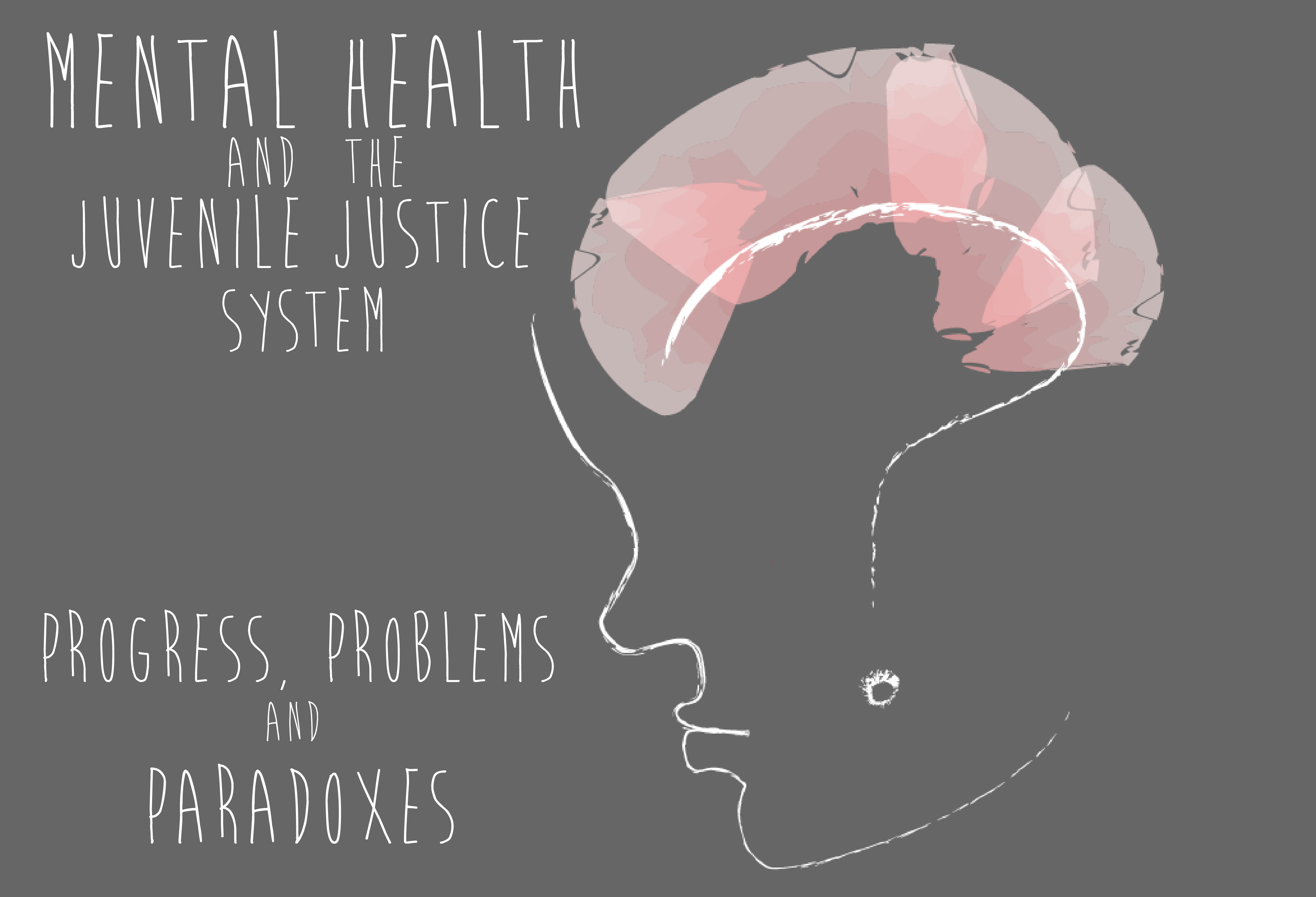 Learn more about mental health and substance abuse on JJIE.org’s Juvenile Justice Resource Hub.
Learn more about mental health and substance abuse on JJIE.org’s Juvenile Justice Resource Hub.
That’s the power of music therapy.
Buffalo, N.Y.,-based Cool has been a practicing music therapist for more than 25 years. She spends one day every week at the Western New York Children’s Psychiatric Center (WNYCPC) with young people ages 5 through 18. Cool’s students, who face issues related to mental illness such as cutting or anger-management challenges, as well as substance abuse, often come to their own realizations about how they communicate through music therapy activities and exercises like rhythm response. It’s a powerful method for building mutual trust and social skills.
Music therapy is the “clinical and evidence-based use of music interventions to accomplish individualized goals within a therapeutic relationship,” according to the American Music Therapy Association (AMTA). It started to gain momentum as an organized clinical profession in the 1940s.
A study by Dr. Michael Winkelman of Arizona State University indicates that a therapist might use group drumming in substance abuse counseling to “activate and reinforce the recovery process,” and emphasizes that it’s particularly useful for youth when group dynamics have been disturbed because of conflict or relapse. His research found that drumming circles have proven to be an important complementary tool in addiction therapy by reducing alienation and are effective in improving a sense of connectedness to the self and others, especially for individuals with repeated relapses.
How can music help with building connectedness, particularly for those who have struggled with relationships in the past? “I haven’t met anyone who doesn’t like music,” Cool said. “They might not want to sing or play an instrument, but it helps them establish their identity and can be used to establish connections with each other. You can meet them on their level.”
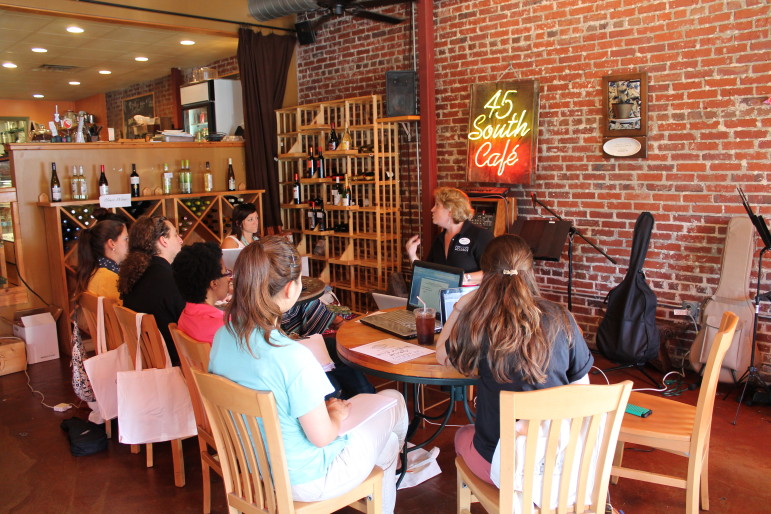
Photo courtesy of Metro Music Therapy
Metro Music Therapy provides workshops in Atlanta and Orlando, Fla., for professional music therapists.
According to AMTA literature, evidence strongly suggests that responsiveness to music is motivated primarily by personal preference, which for most teens and young adults tends to be popular or contemporary music. Therapists like Cool will even allow music from genres like hip-hop or rap, as long as the lyrics are appropriate, if it resonates with the group.
“What we find with youth who have experienced substance abuse or addiction is that wherever they were developmentally when they started [the addiction] is where they come out of it,” Cool said.
While active and interactive music therapy interventions have been found to be the most effective, it’s the “intrinsic musical properties of rhythm, melody, harmony, timbre, lyrics, and form” that ultimately drive the selection of music, AMTA says, whether it’s performed live by the therapist and group together, or heard on a recording or in a live performance.
In addition to lyric analysis and songwriting (which are equally effective in increasing feelings of acceptance and joy and decreasing guilt and fear, according to a 2005 study), Cool likes to use original music-related games and activities (which have been found to effectively reduce stress, according to 2005 research) to engage her students. A favorite among teens is called “Five Minutes of Fame.” She says it’s a bit like “grownup show and tell,” in which members get to bring in a treasured item or share a piece of who they are with one another. “It’s a sacred part of our session,” Cool said. “It’s really soul-baring to do that.”
Play to their strengths

Hilary Kern
Los Angeles-based art therapist Hilary Kern agrees with Cool’s belief in the power of music for teens in recovery. In fact, she integrates music into her visual arts group therapy sessions as a way of getting teens and young adults to open up and connect with one another through a song’s lyrics or thematic elements.
She’ll print out the lyrics and use its themes to form the basis of other activities by asking each person to make an image based on a feeling — the color, the texture they feel, or the line/shape of the rhythm. “Especially for youth facing substance abuse, reconnecting to all of your senses in your environment — and connecting to resources [other than that substance] — is really important.”
Kern said there’s something innate about art that helps bring out one’s strength and encourages new ways of thinking. With teenagers in particular, creating art works well because the time, space and art they create is “theirs;” it’s about ownership and identity. “Structure and materials and a safe setting — that’s what we provide,” she said. “They get to do with it what they want. You get the experience of following their lead.”
She works with teens and adults ages 12 and up in private practice and in group sessions at the Paradigm Malibu Adolescent Treatment Center in Malibu, Calif., where young people deal with substance abuse, mood disorders and family issues.
According to the Art Therapy Association, art therapy is a speciality in the mental health profession that uses art media, the creative process and the resulting artwork to “explore their feelings, reconcile emotional conflicts, foster self-awareness, manage behavior and addictions, develop social skills, improve reality orientation, reduce anxiety, and increase self-esteem.”
“In arts therapy, the group becomes theirs,” Kern said, noting that together the teens get to have some control of the song and the sound they choose to define their group culture.
People who are healing often need help finding their voice, and art therapy — whether visual or auditory — offers a space to express difficult feelings without words. “Externalizing” is the technical term for this important process, said Kern, and the ability to see and be seen by peers without language can be profoundly helpful in the recovery process.
She uses visual activities like painting, collages and drawing, depending on the culture of the group and how much structure is needed. “Sometimes we’ll just do an exercise like ‘Take 30 seconds, where you can’t think about it, and just scribble your feelings on a piece of paper. In color line or shape, what would they look like?’” she said. In this way, Kern said, feelings become a character, something that isn’t so serious or frightening to discuss.
“Art is such a tangible, kinesthetic, playful way to get to know yourself again in a supportive community,” Kern said. The playful and the supportive part is what seems to matter most in recovery.
Cool said she purposely doesn’t like to read the histories of her students before her sessions at the WNYCPC so she can be more open-minded and free of the clinical details of their entire treatment plan. She said she’ll think, “I don’t know why you’re here, but for this hour, we’re here to enjoy music together.”
“I do look for the best in them,” she continued. “Still, sometimes, what I learn and what I see in music therapy are complete contradictions, which gives me hope that they [her students] have what it takes to heal, move on and live productive, peaceful lives.”
Advice for music therapists
“In my experience, the most effective sessions have been in the afternoon,” said Jessica Brizuela, a board-certified music therapist based in Pasadena, Calif. She said that several of the counseling centers with which she’s worked have found that clients are more alert in the afternoon and often ready for a lighter session to end the day after a morning of heavy discussion or cognitive therapy. “Drum circles, music improvisation and lyric analysis have been the most effective session tools.”
For new counselors, Brizuela recommends actively seeking “the continuation of learning,” such as reading, going to workshops and seminars, and talking to other counselors for continued growth.
She recommends the American Music Therapy Association for a list of approved schools for board certification or a degree in music therapy.
Upon completion of an AMTA-approved program, a therapist would need to complete a music-therapy internship, including 1,040 clinical internship hours, Brizuela said. Then therapists are eligible for board examination through the Certification Board for Music Therapists to become an official board-certified music therapist, with the title “MT-BC.”
Regional and National Resources:
- Los Angeles: UCLA Arts and Healing Center: A partnership between the Arts and Healing Initiative, a 501(c)(3) nonprofit organization, and the UCLA Collaborative Centers for Integrative Medicine, offering resources, a database of individual practitioners and links to other therapeutic organizations around the United States and the world. The center also offers professional development training and programs for the general public in the use of the arts for social, emotional, physical and cognitive benefit.
- Atlanta and Orlando, Fla.: Metro Music Therapy: Led by board-certified music therapist Mallory Even, it offers a wide variety of continuing education courses for music therapists seeking credits through the Certification Board for Music Therapists. Even and her team of professionals serve clients of all ages facing addiction and mental illness, among other challenges, in the metro Atlanta and Orlando, Fla., areas.
- American Music Therapy Association: Find recent research, locate a certified music therapist or learn how to get credentialed.
- American Art Therapy Association: Find a certified art therapist or learn how to get credentialed.


